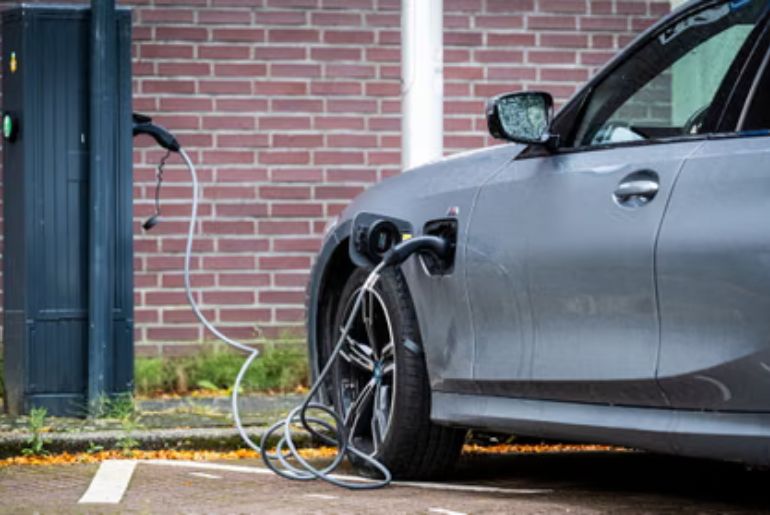Leading European automakers are teaming up with electric vehicle (EV) manufacturers to create pools for carbon credits, helping them comply with the European Union’s 2025 fleet emission standards and avoid billions in fines.
This strategic collaboration comes as the EU tightens carbon emission regulations for passenger vehicle fleets, pushing legacy carmakers to accelerate their transition toward electric mobility or face steep penalties—estimated to exceed €15 billion (≈ $17.5 billion) across the industry.
Pooling: A Key Strategy for Compliance
Under EU law, car manufacturers must limit average CO₂ emissions from their fleets to 93 g/km in 2025, with further reductions required by 2030. Companies that fail to meet the target face penalties of €95 per gram per vehicle of excess emissions—a potentially devastating cost for firms still heavily reliant on combustion engines.
To mitigate this risk, automakers are leveraging the EU’s “pooling” mechanism, which allows multiple manufacturers to combine their fleet emissions. In this setup, traditional automakers can offset their higher-emission vehicles by pooling with zero-emission EV producers such as Tesla, BYD, Polestar, and Rivian, whose clean-vehicle portfolios help balance the overall average.
Pooling arrangements are mutually beneficial—legacy automakers reduce their regulatory exposure, while EV companies earn substantial revenue by selling their unused carbon credits or joining compliance pools.
Major Automakers Enter Pooling Partnerships
Recently, the European market has confirmed several prominent pooling deals.
-
Mazda has entered a pooling agreement with its joint venture partner, Changan Mazda Automobile, to meet EU fleet targets for 2025.
-
Nissan is collaborating with Chinese EV leader BYD, enabling both companies to share emission credits across their European operations.
-
Toyota, Ford, and Stellantis are reportedly exploring similar arrangements with Tesla and Polestar, replicating strategies used during the previous EU compliance cycle (2020–2023).
-
Smaller automakers, such as Subaru and Suzuki, are also seeking partnerships to avoid penalties amid limited EV offerings.
These alliances reflect a growing trend where traditional automakers are increasingly relying on EV manufacturers’ carbon credit strength to remain compliant during their slow transition to full electrification.
EU Rule Adjustments Offer Short-Term Relief
Earlier this year, the European Commission adjusted its compliance framework to allow pooling and carbon credit offsets across the 2025–2027 period, instead of requiring strict annual compliance in 2025 alone.
This policy shift provides automakers short-term flexibility, giving them additional time to ramp up EV production capacity, battery sourcing, and charging infrastructure partnerships. However, experts warn that the measure is only a temporary reprieve, as emission limits will tighten further in 2030 and 2035, when the EU plans to phase out sales of new combustion engine vehicles entirely.
Economic Stakes and Industry Reactions
According to estimates by BloombergNEF, failing to comply with 2025 emission limits could collectively cost automakers €10–15 billion in fines, depending on their fleet mix. Companies with limited electric portfolios—such as Mazda, Subaru, and Suzuki—are the most vulnerable.
“Pooling offers a short-term shield against fines, but it doesn’t replace the urgent need to electrify core vehicle lineups,” said Luca de Meo, President of the European Automobile Manufacturers’ Association (ACEA).
Analysts point out that while pooling helps manage immediate financial risks, it can also slow the industry’s EV transformation, allowing some automakers to delay necessary investments in clean technology.
EV Makers Benefit from Carbon Credit Revenue
For EV manufacturers, pooling deals represents a lucrative business opportunity. Companies like Tesla have earned billions in revenue from selling emission credits to legacy automakers since 2019.
In 2024 alone, Tesla reportedly generated over $1.7 billion in carbon credit sales—a figure that is expected to grow as more automakers seek compliance support in the 2025–2027 period.
Similarly, Chinese EV giants BYD and NIO are increasingly entering the European credit market, leveraging their strong production capabilities and clean energy credentials to build partnerships with established automakers.
Future Outlook: Compliance vs. Transformation
While pooling is an effective short-term strategy, industry experts agree that true regulatory compliance will eventually require massive EV adoption and battery ecosystem expansion.
By 2030, automakers must cut average fleet emissions by 55% compared to 2021 levels, and by 2035, nearly all new passenger vehicles sold in the EU must be zero-emission.
As a result, pooling arrangements may serve as a bridge strategy—helping automakers meet near-term goals while buying time to scale up their electric vehicle portfolios, charging networks, and supply chains.
“The European market is entering a decisive decade,” said Elisabeth Werner, Deputy Director-General for Mobility and Transport at the European Commission. “Pooling can help in the short term, but the real solution lies in investing in sustainable, full-scale electrification.”
Conclusion: Collaboration Driving the EV Transition
The rise of pooling partnerships between legacy automakers and EV specialists reflects both the challenges and opportunities of Europe’s evolving automotive landscape.
While these collaborations help avoid steep EU fines in the immediate term, they also highlight a transitional dependency on EV leaders like Tesla, BYD, and Polestar—companies that have already mastered the technology driving the next generation of mobility.
As emission norms tighten toward 2030 and 2035, the success of Europe’s auto industry will depend not just on compliance strategies but on long-term innovation, electrification, and sustainability.

